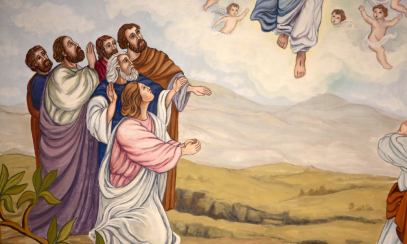The History of Liturgical Books – Part II
Vatican II to the Present
Vatican II to the Present
Rita Thiron is director of the Office of Worship for the Catholic Diocese of Lansing and a member of the board of the Federation of Diocesan Liturgical Commissions.
After the Council of Trent (1548-1563), our liturgical books remained relatively unchanged for 400 years. Some papal initiatives, including the reform of Holy Week in the 1950s, created some modest changes to texts and the liturgical calendar. But when Pope John XXIII called for the 21st ecumenical council, he wanted an aggiornamento (“a re-awakening” “fresh air”) so that the Church would continue to be an instrument of grace in the midst of a modern world.
One of the hallmarks of Vatican II was scholarship! Experts in liturgical and church history called periti advised the bishops of the world before, during, and after their four sessions. In all, 16 documents were promulgated by the Council. The very first document of those was passed on December 4, 1963 – “Sacrosanctum Consilium, the Constitution of the Sacred Liturgy.” In this magnificent treatise on the theology of worship and the central role of liturgy in the life of the Church, the bishops wrote:
In order that the Christian people may more surely derive an abundance of graces from the liturgy, the Church desires to undertake with great care a general reform of the liturgy itself… In this reform both texts and rites should be drawn up so that they may express more clearly the holy things they signify and that the Christian people, as far as possible, are able to understand them with ease and to take part in the rites fully and actively, as befits a community. (SC 21)
The Council decreed that several key principles would guide the reform of our official books. The primary goal would be the full, conscious, and active participation of the people – their right and duty by reason of their baptism. The rites would be “marked by noble simplicity; …short, clear and unencumbered by useless repetitions; … written within the people’s powers of comprehension and as a rule not require much explanation.” (SC 34) Toward that end, while Latin was to be preserved, the Mass and sacraments, once again, would be celebrated in the language of the people and acclamations and dialogues would increase the speaking role of the assembly. The use of Sacred Scripture would be greatly expanded and the Word would be integral to all liturgical celebrations.
While “bearing witness to unbroken tradition” and preserving ancient texts, the rites would provide richer options to address a variety of pastoral needs and circumstances . For example, the Council called for the restoration of the ancient catechumenate process – what you now experience as the Rite of Christian Initiation of Adults (RCIA). The Order of Mass would be streamlined by eliminating various devotional practices that had crept into our liturgy over the centuries. Now it more closely resembles the practices of the Early Church and allows us to focus on the paschal mystery of Christ.
In the reform of the Liturgical Year, the Church restored greater prominence to the Sacred Triduum and to Sunday as the primordial feast. Saints from every era and continent were recognized in the reformed calendar.
All of this required new books! The texts were created by a committee of experts (Consilium) and were released in Latin. Then, each conference of bishops had authority to translate them into their own language groups.
The Roman Ritual (our book of rites) was published in separate volumes containing the reformed texts for the Rite of Baptism for Children, Rite of Penance, Rite of Marriage, the Book of Blessings, etc.
The Roman Missal (our book for the celebration of Mass) was, once again, printed as separate books for very practical reasons – a Sacramentary which contained the prayers; the Lectionary which contained the readings, the Book of Gospels, etc. The first edition came out in 1969 and was fully translated into English by 1974. A “second edition” (with its slight modifications) was promulgated in 1975 and the English translation of it appeared in 1985 (this is our current text). In 2000, Pope John Paul II, issued a “third typical edition” – not much changed, but many more saints had been canonized! This edition needed to be translated into English and our bishops have been carefully working on that for over ten years. It will be used in the dioceses of the USA on the First Sunday of Advent 2011. (Watch for more on that next month!)
The Roman Pontifical (which contains the rites a bishop uses) and the Liturgy of the Hours (or Divine Office) also underwent reform with careful fidelity to ancient texts and practices.
In 2,000 years of development, our liturgy has always been a “living” liturgy. Early extemporaneous texts differed from place to place, from presider to presider. Modern liturgical books – based upon some of those same ancient texts – are shared with a universal Church. But from ancient scrolls to hardbound texts our goal has been the same – to give glory to God and to express our thanks for the great gift of our redemption!
Who said that?
“Lose yourself wholly; and the more you lose, the more you will find.”
A: St. Catherine of Siena (1347-1380). St. Catherine of Siena is the Doctor of Unity. She was a tertiary of the Domincan Order and a scholastic philosopher and theologian. She lived a life of prayer, penance and contemplation and worked to care for the sick and the poor.
She is perhaps best known for her efforts at convincing Pope Gregory XI to return the papacy to Rome from its displacement in Avignon, France in 1376. She also played an important role in establishing peace among the Italian city-states.
The last of 25 children, she first began to have mystical experiences at the age of six. In her Dialogue, she described her mystical experiences of God that included what she referred to as a “Mystical Marriage” with Jesus. She received the stigmata in 1375, which became invisible through most of her life, but reappeared at her death. She died of a stroke in Rome at the age of thirty-three and was canonized in 1939.
She is the Patron Saint of fire protection, Italy, and nursing services. Her feast day is April 29.
The Liturgical Books
THE ROMAN MISSAL
Sacramentary/ Roman Missal (1969, 1974/ 1985 2000/2002)
• General Instruction of the Roman Missal Lectionary
• Introduction to the Lectionary for Mass
• Volume I - Sundays and Solemnities (1997)
• Volume II - Weekdays, Cycle I (2001)
• Volume III - Weekdays, Cycle II (2001)
• Volume IV - Ritual Masses, MVNO, Masses for the Dead (2001)
The Book of Gospels (1984, 1999)
• Introduction to the Book of Gospels
The Collection of Masses for the Blessed Virgin Mary (1986)
The Lectionary for Masses with Children (USCCB 1993)
THE ROMAN RITUAL
The Rite of Christian Initiation of Adults (1974, 1987)
The Rite of Baptism for Children (1969)
The Rite of Reception into Full Communion of the Catholic Church (1974, 1987)
Rite of Penance (1973)
Rite of Marriage (1969, 1981)
Book of Blessings (1989)
The Pastoral Care of the Sick (1974)
The Order of Christian Funerals (1989)
Holy Communion and Worship of the Eucharist Outside Mass (1973)
• Rite of Distributing Holy Communion Outside Mass
• Rite of Communion to the Sick
• Adoration and Exposition of the Blessed Sacrament
• Order for Solemn Exposition of the Holy Eucharist (USCCB, 1992)
THE ROMAN PONTIFICAL
Rite of Dedication of a Church and an Altar (1989)
Rite of Confirmation (1973)
Rites of Ordination (2003)
Rite of Religious Profession (Men, Women)
Rite of Blessings of Persons
THE LITURGY OF THE HOURS (1975)
Volume I Advent and Christmas
Volume II Lent and Easter
Volume III Ordinary Time, Weeks I-17
Volume IV Ordinary Time Weeks 18-34
– Sunday Celebrations in the Absence of a Priest (USA 1994, 2006)



